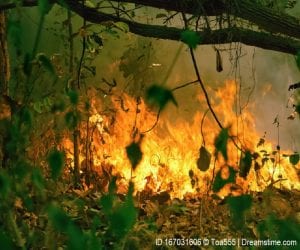Let’s be frank: the outlook for the Arctic isn’t exactly as bright as snow. In the past 40 years we’ve witnessed massive ice melting on sea and land due to anthropological climate change, and with our continuously growing population it’s showing no signs of stopping. Even holding the increase in global average temperatures to 2°C as outlined in the Paris climate accords (which is far from a sure thing) could mean a rise as high as 5°C in the Arctic. Current climate projections predict the Arctic will have its first ice-free summer midway through this century. The ensuing sea level rise will continue to impact humans and wildlife in the Arctic and beyond, especially in coastal communities.
I recently attended the presentation, “Arctic Environmental Futures: Nexus of Science, Policy, and Operations” held at The Wilson Center in DC. The presentation brought together a diverse panel of experts to discuss the latest research and most pressing problems facing the Arctic. Each speaker highlighted the Arctic’s significance for the world, and the urgent need for action to ensure a strong, sustainable future for the region.
Saving the Arctic
So as a society and as citizens invariably connected to the fate of the Arctic, what do we need to do? The panel underscored the importance of supporting and sustaining scientific research in the region to increase our understanding of the problems, and lead us to lasting solutions. Additionally, the speakers argued that policy makers and those working on the ground need to be proactive, focusing more efforts and resources on preventative measures to ensure the safety and well-being of communities in the Arctic. We need to promote awareness about the plight of the Arctic to both politicians and the public. People need to appreciate the imminent perils facing the Arctic: this is not a “looming” or “emerging” issue, but one that prominent, apparent, and progressing.
Teaching About Our Climate
Along the same lines, the panel unanimously called for better climate education in our schools. Students must understand climate science and global climate systems to appreciate the importance of the Arctic, and to make informed decisions about the Arctic as citizens and consumers. Population Education can help you teach about climate in your classroom:
- Catching Pollution – written for upper elementary students, this lesson connects carbon emissions and other environmental impacts to our transportation systems.
- People and Climate Change: The Data Is In – a middle level activity that has students evaluate data to identify relationships between population growth, climate change, ice melt, and sea rise.
- Carbon Crunch – high school students explore the effects of human population growth and industrialization on Earth’s climate, and how climate change impacts certain communities disproportionally.
It’s important to balance the doom-and-gloom of climate change or the state of the Arctic with more positive perspectives. Sweeping problems that seem too complex or difficult to solve can make students feel powerless. The panel was candid about how critical the situation is in the Arctic, but they also believed that we can change these systems with effective policy, sustained research, and individual action. Instill students with the same sense of hope and engagement. The future of the Arctic is an urgent dilemma, but not a hopeless one.




